Related Topics
Downtown
A discussion about downtown area in Philadelphia and connections from today with its historical past.
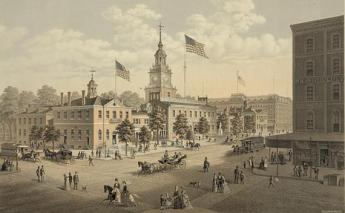
Benjamin Franklin
A collection of Benjamin Franklin tidbits that relate Philadelphia's revolutionary prelate to his moving around the city, the colonies, and the world.
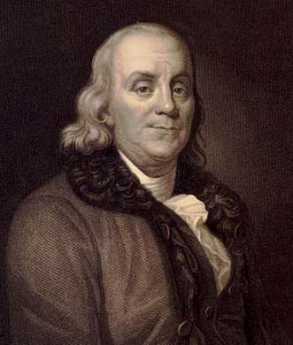
Historical Preservation
The 20% federal tax credit for historic preservation is said to have been the special pet of Senator Lugar of Indiana. Much of the recent transformation of Philadelphia's downtown is attributed to this incentive.
Science
Science
Architecture in Philadelphia
Originating in a limitless forest, wooden structures became a "Red City" of brick after a few fires. Then a succession of gifted architects shaped the city as Greek Revival, then French. Modern architecture now responds as much to population sociology as artistic genius. Take a look at the current "green building" movement.
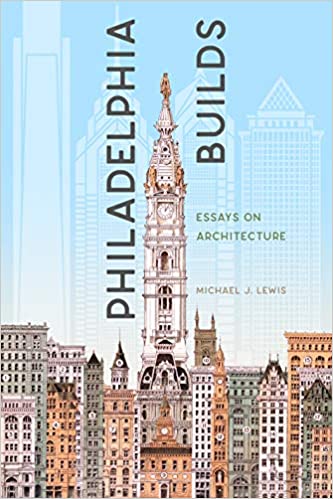
Tourist Walk in Olde Philadelphia
Colonial Philadelphia can be seen in a hard day's walk, if you stick to the center of town.
Up Market Street to Sixth and Walnut
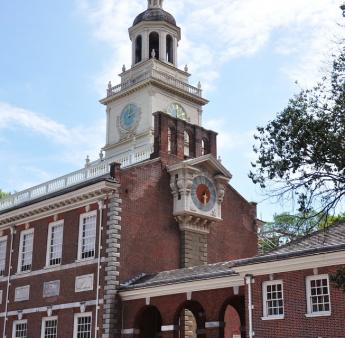 Millions of eye patients have been asked to read the passage from Franklin's autobiography, "I walked up Market Street, etc." which is commonly printed on eye-test cards. Here's your chance to do it.
Millions of eye patients have been asked to read the passage from Franklin's autobiography, "I walked up Market Street, etc." which is commonly printed on eye-test cards. Here's your chance to do it.
Venturi's Franklin Museum in Franklin Court
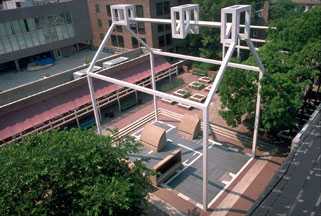
|
| Franklin Court Museum |
When Judge Edwin O. Lewis was seized with the idea of making a national monument out of Colonial Philadelphia, he wanted it big. Forty or so years later, it's big all right, but not big enough to encompass the whole of America's most historic square mile. Government ownership in the form of a cross now extends five blocks north from Washington Square to Franklin Square, and four blocks East from Sixth to Second Streets. Restoration and historic display have spread considerably beyond that cross, however, and the Park Service has created ingenious walkways within the working city in the neighborhood. If you thread your way through these walkways, you can stroll for miles within the world of William Penn and Benjamin Franklin. One such unexpected walkway is now called Franklin Court, which essentially cuts from Market to Chestnut Streets, within the block bounded by 3rd and 4th Streets. Hidden in the center is the reconstructed ghost of Franklin's quite large house, sitting in an interior courtyard bounded by a colonial post office, and a newspaper office once operated by Franklin's grandson. And, along the side of the walkway near Chestnut Street, is a fascinating museum of Franklin's personal life, built by no less than Frank Venturi, and operated by Park Rangers in the polished but low-key manner for which the U.S. Park Service is famous.
For some reason, this jewel of a museum has not received the high-powered publicity it deserves. It's off the main Park premises, as we mentioned, and some of the problem has to be attributed to Venturi. As you walk through, you don't expect a huge museum to be there, and it can look pretty inconspicuous as you walk past because it is mostly underground. Take my word for it, it's worth a visit. There are long descending ramps inside the doors, which can be pretty daunting if you are elderly and tired. But, also inconspicuous, there's an elevator if you look around for it. Venturi didn't seem to like windows very much, which is a problem for some people.
There's a movie theater inside there, playing a long list of fascinating documentaries. There's an ingenious automated display of statuettes which utilize spotlights and revolving stages to present Franklin in Parliament, resisting the Stamp Act, Franklin being his charming self before the French monarchs, and the frail dying Franklin getting the Constitutional Convention to approve the document. There are also a variety of ingenious inventions of Franklin's on display in the original, including bifocal glasses, the first storage battery, a simplified clock, several library devices, the Franklin stove, and so on. In some ways, the highlight is the Armonica.
The Armonica is the musical instrument invented by Franklin, for which both Beethoven and Mozart composed special music to exploit its haunting tone. If you ask the nice Park Ranger, she will be flattered to play you a tune on it.
Originally published: Saturday, April 21, 2007; most-recently modified: Friday, September 20, 2019